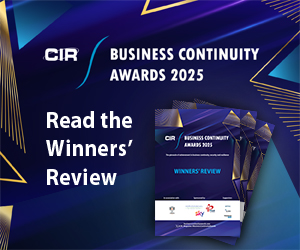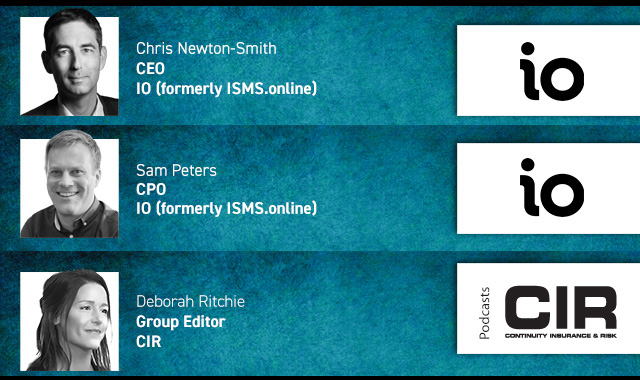At the heart of any organisation is its workforce, but the shape and nature of this asset looks set to change beyond all recognition. Martin Allen-Smith takes a look at some of the developments in human capital risk management
The business landscape has evolved considerably from the days in which the only measurable that mattered was the bottom line. No longer assessed solely on financial performance and the quality of their products and services, organisations are also judged on the way they treat and engage with their staff and customers, the support they give to the communities in which they operate and their impact on society as a whole. These factors are increasingly important for attracting and retaining staff, building a strong reputation and cultivating loyalty amongst customers.
Many firms find themselves at the intersection of three market forces. Firstly, there is a need to accelerate growth. Quarter to quarter focus has made organisations short-sighted, when what they need to now invest in is long-term growth, with an holistic approach that blends both organic and inorganic growth. Many complex businesses also lack a unifying vision at the senior level, and therefore risk misalignment of business unit growth plans.
There is also the influence of digitisation and technology transformation. Technology is disrupting all sectors and value chains, and the digital workforce supply is both constrained and expensive. Business heads are beginning to ask for data-backed HR insights.
Another big challenge is in identifying and managing people risk. People have a considerable impact on both operational and balance sheet risk. Regulators are stepping in now when organisations fail to adequately self-correct those risks, and HR is expected to proactively highlight both people and business risks.
“All of these market forces are giving rise to an era of unprecedented volatility,” says Neil Shastri, leader of Aon’s Global Insights and Innovation team. “The wild fluctuations of the stock indices are a reflection of this reality.”
To find out what top executives were really concerned about, Aon conducted a survey of over 1,800 executives asking them about the key risks faced by their organisations. Among a number of the findings, it found that damage to reputation or brand was the number one risk firms were concerned about. From CEOs being prosecuted for harassment, to employees taking to social media to criticise their firm, the reputation or brand of a firm is potentially at risk, and the actions of one employee can have a tremendous impact and cause firms to lose credibility. In the era of social media, firms must manage their employer brand on social media platforms as LinkedIn and respond proactively. If they fail to do so, perception – in the mind of current and potential employees – becomes reality, which is important to consider given that failure to attract or retain top talent was seventh on the list of risks organisations face, according to the survey.
Looking forward, the Aon report also found that cyber risk is ranked as the number one risk in the coming three years. “Employees are your first line of defence against cyber attacks,” Shastri explains. “One bad link being clicked can affect an entire network. On the other hand, with the General Data Privacy Regulation (GDPR) coming into force recently, there has been a lot of pressure on HR to ensure that personally identifiable data is protected and that access is limited.”
So what good practice measures can organisations look to implement in order to protect themselves from risks around human capital? Perhaps one of the most important is one of the hardest to gauge – planning for the future of the work landscape. Companies need to identify the ways in which technology and other potentially disruptive factors will change the need for technical and behavioural skills that they might need over the next three to five years. This has direct implication for the strategic workforce planning process (which may well need to be fluid and incorporate ‘gig economy’ workers), as well as organisational structures, which also need to be fluid enough to allow for employees to group around a problem and then disband, rather than having rigid hierarchies and silos.
Technology can help in estimating the impact of automation over the next few years, and in allowing firms to record and monitor their employees’ skills so that the people with the best skills profile might be deployed to a particular task or problem.
Organisations also need to strive to hire people with the right fit. The skills needed for tomorrow could be quite different from those needed today, and progressive firms are hiring people based on structured, technology-based assessment to ensure they are a fit both culturally and from a skills standpoint. Firms are looking for transferable skills such as collaboration, communication and learning agility that will be useful for an individual even if the technology/domain knowledge required changes. Firms are also using technology-based assessments to make it easier for candidates to apply – expanding their traditional applicant pool – as well as augmented reality simulations to give candidates a real feel for what the day-to-day on a job might look like.
Business also needs to consider getting analytical about diversity and inclusion. Expanding the definition of diversity beyond gender to include dimensions like skill-set diversity or educational background diversity is important. It is also advisable to move beyond looking at D&I as a box ticking exercise, and towards demonstrating ROI on D&I programmes.
Mercer recently published the latest version of its workforce monitor, which examined a number of key considerations including the impact of Brexit, migration and ageing on the UK workforce. Its research suggests that organisations need to be open-minded about the future of their human capital and agile enough to make what could amount to quite substantial changes from the approach they might currently be taking to the human resources they have.
According to Mercer, these trends should be taken by organisations as a call to action to plan ahead and rethink their workforce strategies and it has come up with ‘five lines of defence’ that could provide a framework for businesses to take this proactive action: bring deeper insight to traditional sourcing methods to anticipate gaps and find the needed talent from traditional labour pools; find people from sources you might not have considered before; understand the ROI and timeframes of automating tasks and processes; move jobs and talent to where the people are, and consider freelance and offshore talent; and recognise when people costs might warrant a change in business direction.
The need to prepare the foundations for a period of significant change is also the theme of Deloitte’s latest research on the topic. Amid concerns about automation, the need for new skills, an ageing workforce and a tightening employment market, the make-or-break issue facing companies is the need for realignment among the senior leadership teams to focus on the evolving role of business in today’s society. In its 2018 Global Human Capital Trends report, Deloitte examined the increasing expectations of the individual and the breathless pace at which technology is shaping organisations’ human capital priorities.
Respondents included over 11,000 HR and business leaders and their answers revealed that in the past year, organisations have become increasingly focused on how automation-induced job shifts will impact individuals. The results show that more than four in 10 companies believe automation will have a major impact on jobs, and 61 per cent are now actively redesigning jobs around AI and robotics. Against this backdrop, companies and individuals realise that the traditional career model is becoming defunct. Some 47 per cent of those surveyed consider building new career models and skills as very important. More than 54 per cent have no programmes in place to build the skills of the future, and only 18 per cent feel they give employees opportunities to develop themselves.
“Automation...will improve scale, speed and quality,” said Stephan Tilquin, talent leader at Deloitte. “But it’s important to remember that as routine work is automated, new jobs will be created – jobs that are more service-oriented, interpretive, social, and play to our essential human skills. Only companies that redesign how work gets done to leverage these skills will be able to stay a step ahead of their competition.”
This article was published in the May 2018 issue of CIR Magazine.
Download as PDF
More interviews and analysis
Contact the editor
Follow us on Twitter
Printed Copy:
Would you also like to receive CIR Magazine in print?
Data Use:
We will also send you our free daily email newsletters and other relevant communications, which you can opt out of at any time. Thank you.











YOU MIGHT ALSO LIKE